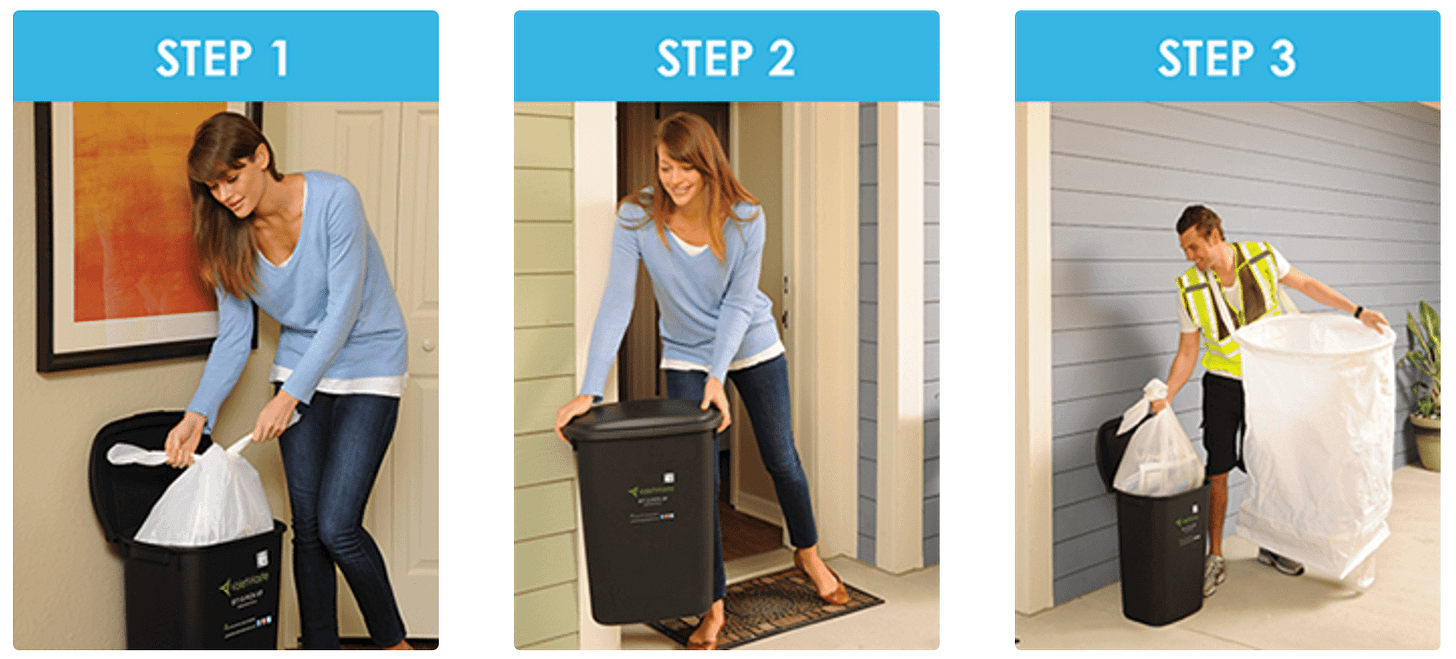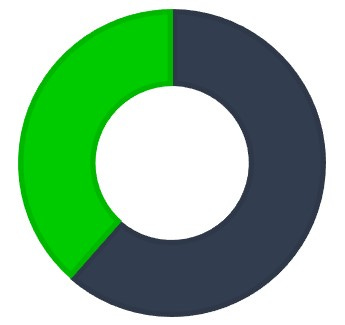Green Leasing 101
Incorporating the right lease language can lay a foundation to not only reduce impact but also increase revenue
One opportunity that Covid-19 has presented is an opportunity for landlords to re-evaluate leasing terms and identify opportunities to reduce on-site energy consumption. When it comes to leasing, the Green Lease provides the ability to identify sustainability goals and educate residents.
Understanding how the Green Lease can benefit all parties of the agreement is important for all organizations. From leasing professionals to attorneys, it is critical to ensure that all parties understand the benefits of these types of lease clauses. Access to data is the foundational need in most green lease initiatives. Having this data can help the landlord make better property-wide decisions, and from a tenant's perspective, can provide rewards for implementing conservation measures.
Most of us know that a contract is an agreement between both parties; keep this in mind when forming the green lease clauses. It is not just an ask of what they can provide to you, but also what they will get in return. This can take many forms but can include language around helping identify efficiencies to reduce the community's cost and impact as a whole. For example, access to water meter data might allow the landlord to spot a leak and collaborate with the tenant to fix it instead of it being absorbed in the bill and not recognized. This requires approaching the green lease clauses as a partnership, working together to face utility consumption issues, and resolving issues to the benefit of both parties.
Green Lease Leaders is a great place to start; launched in 2014 by the U.S. Department of Energy’s Better Buildings Alliance and the Institute for Market Transformation; Green Lease Leaders is a national program that sets standards for what constitutes a green lease and recognizes cross-sector landlords and tenants for creating and implementing those leases. Green Lease Leaders provides a host of resources on their website to help create smart, energy-aligned clauses that unlock win-win investments in energy efficiency and sustainability. This includes their annual Green Lease Leader Award, for which applications are due by March 31 for recognition this year.
The Green Lease Leader Award provides an outline of best practices around tenants and landlords collaborating to save energy, reduce costs, and reach sustainability goals. These best practices include:
Providing sustainability contact
Implementing cost recovery clauses for energy efficiency upgrades benefiting the tenant
(In multifamily) implementing energy efficiency improvements during unit turns
Tracking common area energy use
Tracking common area water use
Disclosing the whole-building ENERGY STAR score to tenants annually
(In multifamily) disclosing the whole-building ENERGY STAR water score to tenants annually
Meter tenant spaces for electric use or request annual tenant energy disclosure if individually metered
Require minimum energy efficiency fit-out for tenants
Establish a tenant energy efficiency engagement and training plan
Demonstrate innovation in leasing
More detailed information around each of these can be found in the Reference Guide here.
By incorporating green lease terms in the lease itself, the acceptance rate will increase as tenants agree to multiple terms and conditions at this time. It is normal and typically that tenants will consent more readily if it is integrated with other leasing terms at the same time. Calling the process out in a separate process brings unnecessarily increased scrutiny, which could cause some tenants to question why you didn’t already bring this up when you brought up other leasing terms and conditions.
Green leasing provides an opportunity to reduce the consumption of energy and water for the property as a whole as well as for the tenant. When residents are increasingly challenged by the economic impacts associated with the pandemic, the ability to reduce expenses helps keep real estate affordable. This is a key area of importance; wasted income spent on inefficient utilities is wasted money by any measure. Green leasing can be a key tool in addressing those inefficiencies. The greater the tenant's ability to stay in the lease because they can afford the lease, the less turnover for the landlord. It is truly a win-win for both sides.
The 800 lb gorilla in the room for multifamily real estate (and triple net) is the split incentive issue. From an economic perspective, owners may not recognize the opportunities associated with reducing the tenant’s energy and water consumption. It is, however, not entirely accurate to say there are not benefits to the owner to invest in tenant-controlled spaces.
For starters, the tenant space while leased still belongs to the property owner, and the asset value is reflective of the total real property, both the leasing area and the common area. More efficient appliances, fixtures, and features provide the property with an updated or modern comp when compared against older and less updated tenant spaces. As those older spaces may require remodeling to maximize rent potential, these spaces cannot maximize the rental rates allowed within the market.
Tenant spaces that don’t waste resources also tend to retain comfort, which leads to a higher rate of tenant satisfaction. Satisfied tenants provide higher retention rates than unsatisfied tenants, making efficiency one of the most cost-effective strategies that property managers and owners can implement. Any leasing agent can attest, tenant turnover is expensive. Marketing funds have to be budgeted to attract new prospects, and money is lost while the unit sits empty. From a maintenance perspective, managing energy consumption can also provide insight into the mechanical performance of heating, cooling, and hot water heating systems on the property. Realizing a drop in performance allows an opportunity to address issues before they result in failures. Reduced maintenance issues inside the unit reinforce tenant satisfaction.
Reducing the amount of energy and water that tenants consume reduces the amount of energy and water they have to purchase, increasing the tenant's cash flow. Tenants with increased cash flow have an advantage over tenants who have less cash flow, of course, as more freed income provides opportunities to allocate that cash towards other uses. This is where true synergy can be harnessed for the landlord. We have already addressed how improved comfort and reliability of building systems can increase tenant satisfaction, but the implementation of desirable tenant amenities can also reinforce tenant satisfaction. While some amenities like a pool or a fitness center represent cost only, other amenities can be implemented that provide monetization opportunities while also being part of a property-wide impact reduction strategy.
One such amenity is a Door-to-Door Waste Valet service, such as Trash Butler. The disposal of landfill waste, recycling, and even composting can be challenging in a multi-family environment. The location of waste and recycling containers tend to be inconvenient for many residents, and having to visit the dumpster enclosure can expose the resident to unflattering smells and sites. Door-to-Door Waste Valet services address this very issue. Instead of figuring out where to take their landfill waste, recycling, and possibly composting, the Door-to-Door program provides this service literally outside the resident’s door. When executed effectively, this program can also manage your waste streams, ensuring that the correct item ends up in the correct container. Properties executing such as strategy can achieve over a 90% diversion rate in a residential setting with a reduced waste stream contamination rate. It may also be a source for data, as the Door-to-Door service can be tasked with collecting and reporting collection data for each waste stream removed.
Of course, Door-to-Door services cost money, but this is where the monetization opportunity presents itself. It is not uncommon for the landlord to recover administrative fees and incorporate markups in these programs. These marked-up costs are passed on to the resident, who pays a monthly fee for the amenity. They can now afford an amenity because you freed up cash previously going to the electric, gas, or water utility. This strategy creates a revenue stream and a desired amenity, in addition to reducing environmental impact through improved landfill diversion. Win-win-win.
Another amenity that can be highly desired and create a monetization opportunity at the same time is electric car-share services. Envoy provides an example of such a platform. Envoy introduced the concept of mobility as an amenity. This service provides Teslas, Jaguars, and other desirable electric vehicles that can be leased exclusively by your residents. In some cases, this may eliminate the need to even own a car for some tenants. From an environmental perspective, the EV reduces emissions that otherwise require transportation in a fossil fuel-powered vehicle. It also provides a bit of a wow factor. Show up in a Tesla without having to own a Tesla, kind of cool. Like the Door-to-Door Waste Valet model, this amenity provides an ability to mark up the service and create a revenue stream for the landlord.
These revenue streams start with reducing the tenant’s utility costs. That process starts with understanding where opportunities exist, which requires data to understand what is normal and what is high consumption. The gateway to that data is the Green Lease. Each piece builds on the other. In the end, the result is a highly engaged and satisfied tenant base in a property that wastes less, has reduced turnover, and provides greater revenue for the owner.
You can help reduce the impact of the built environment by sharing this blog with your peers. Together we can impact the 39% of greenhouse gasses attributed to the built environment. It starts with awareness, and we succeed with teamwork.
Stay well!
Chris Laughman is the ThirtyNine Blog author, a blog dedicated to reducing the impact of the built environment. When not blogging, Chris is helping the real estate industry reduce energy and water impact as the Vice President of Sustainability for Conservice, the Utility Experts. Whether Multifamily, Single Family, Student Housing, Commercial, or Military, we simplify utility billing and expense management by doing it for you. Our insight into your utility consumption provides an opportunity to identify risks. Leveraging innovation and experience we ignite solutions with real impacts and track performance to ensure the trendline stays laser-focused on the goal. At Conservice we have developed a true bill-to-boardroom solution to help truly make a difference. We have before us a tremendous opportunity. Standing shoulder to shoulder, we will get this done. Contact me at claughman@conservice.com for more information.
Follow us at:
Twitter: @BlogThirtynine
Instagram: ThirtyNine_Blog











